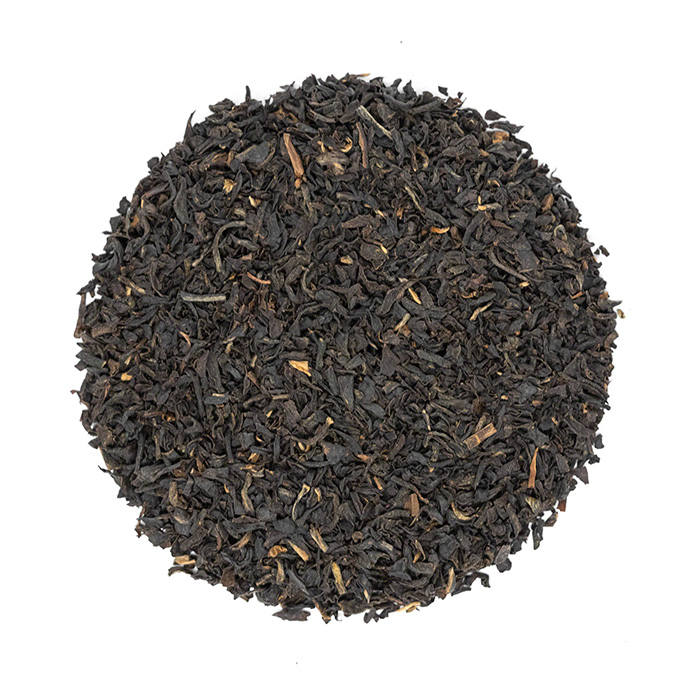Reading Tea Leaves Beginners Guide
This post may contain affiliate links. Simple Loose Leaf is a participant in the Amazon Associates Program, an affiliate advertising program designed to provide a means for sites to earn advertising fees by linking to Amazon.com. Curious to know what the future will bring? Tea may tell. Tea leaves reading is a centuries-old method of telling a fortune from tea or coffee. This skill originates from Gypsies and today is practiced in many countries by many fortune tellers or amateur tea leaf readers. Learn how to get started with tea leaf reading at home.
What is tea leaf reading?
Tea leaf reading or Tasseology is a fortune-telling method that uses tea residue on the bottom of the cup to predict what the future will bring to the tea drinker. After drinking the tea, the residue on the bottom of the cup forms different shapes or symbols, all with different meanings and many ways to interpret them. That's why tea leaf reading is not as easy as it sounds. It takes practice, knowledge, and a little bit of imagination too. In the past, tea reading was quite common and used to satisfy curiosity. Today, it may not be as widespread or as popular as it was in the past. However, it's still fun to see the present and future while having fun, developing creativity, and deepening your love for tea.How to Read Tea Leaves
There are different types of special tea leaf reading cups. Some include zodiac signs, some playing cards symbols[1]. However, regular cups are used too. To read tea leaves, you will need loose leaf tea or ground coffee, a wide regular tea cup, preferably a white ceramic or porcelain cup, and some knowledge about the symbols. You may be able to use tea bags too, but this is usually not recommended. If you cut the tea bag open and use the dust/fannings. You will be able to steep the tea in the cup to get a residue on the bottom. However, this method will be a lot messier and won't give the best results–either for drinking or reading.Basic steps in tea leaf reading
Tea leaf reading may look easy, but it takes practice and knowledge to know how to interpret leaves correctly. Depending on other symbols or how they are placed in the cup, they may have different meanings. Only the person who wants to know its future (or present) drinks the tea. Tea reader does not need to drink unless she or he is telling her/his own future. You can read your own cup or find a tea leaf reading specialist called the "seer[2]." Put some loose leaf tea in a cup and add hot water. Steep for a few minutes. The drinker should stir the tea leaves in a cup before drinking. After drinking, she or he should take the cup into their left hand and ask any question they are curious about[3]. Don't say questions aloud. Then she or he should turn the cup onto the napkin placed on a saucer to collect the remaining liquid[4]. Although discarding the tea without drinking it is possible too, it's believed that the person who drinks the tea is able to influence the tea leaves to form shapes and symbols specific to that person only[5]. Don't force yourself to drink tea you don't like or to drink it only for the fortune-telling purpose. Instead, do it at the end of a regular tea-drinking session.Common Symbols and their Meaning
If you want to learn how to read the leaves correctly, you will need a lot of practice, knowledge, and imagination. The ability to see the shapes, letters, or patterns to read the fortune from a cup plays an important role in this method. The common symbols include letters, animals, lines, and shapes like:- snake meaning enmity or falsehood[6],
- spade meaning disappointment, failure[7],
- mountain meaning hindrance[8], if there are more than one, but one means the opposite - success[9]
- house meaning changes, success[10]
- question mark meaning the outcome of the situation is uncertain
- acorn meaning wealth[11]
- heart meaning good luck, joy, romance, and friendship[12]
- line meaning journey; a long straight line meaning long journey, while a wavy line means delayed journey[13]
Position of the symbols
However, sometimes the placement of the symbols in the cup will determine their meaning too. For example, tea leaves in the shape of a tree can have both good and bad meanings. If the tree is placed closer to the rim of the cup, it means your life is in harmony, and you are able to solve problems. If it's placed in the middle of the cup, it means you may need the help of friends or family to progress in life or with a current situation. And when the tree symbol is shaped at the bottom of the cup, it means your life is not going well. You need to re-think your actions and learn from others who have succeeded[14]. The position of the shapes in relation to the handle of the cup matters too. In your mind, divide the cup into two parts - a handle and a bowl. Bow, you will understand which shapes represent the future and which represent the present. Those closer to the handle are related to the present, and those closer to the handle may imply future events[15]. Most loose leaf black teas work well for tea leaf reading, as long as they have smaller broken leaves that will leave a residue on the bottom of the cup. Long leaves or ball-shaped oolongs are not suitable. Many flavored teas are not suitable as well, because they contain other ingredients such as pieces of fruits, buds, or other. Remember to enjoy your cup of tea too, not only to drink it for fortune-telling purposes.Kenya GFOP loose leaf tea
Try your hand at tasseology with one of these teas:
More from:
SLL








Leave a comment